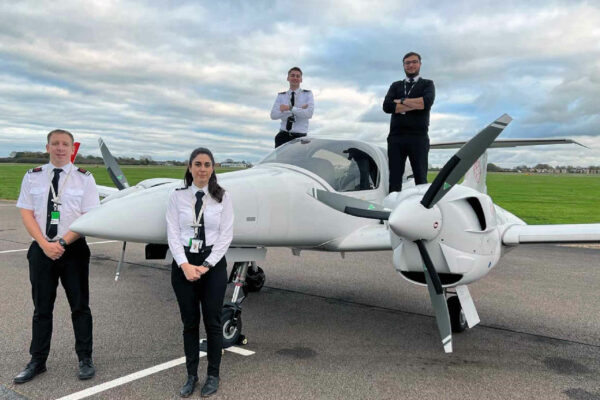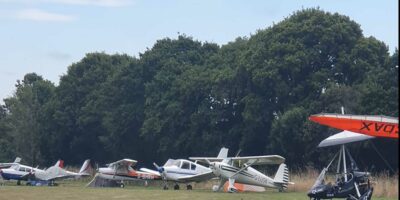In the en route phase of Instrument Flight Rules (IFR) flight, routing with direct reference to navaids has long been a thing of the past. The first European ‘Area Navigation’ (RNAV) mandate came in 1998, but the air traffic system had already moved in that direction.
Some pilots older than me may remember using devices like the BendixKing KNS80 to create waypoints within VOR/DME coverage, but it was not until the arrival of systems like the KLN94 or Garmin 155 that light GA aircraft could seamlessly fly RNAV routes. Routing was now possible to waypoints or navaids hundreds of miles away and beyond reception range.
Despite this, the use of Global Navigation Satellite System (GNSS) for instrument approach procedures (IAPs) lagged. In the mid-1990s the FAA introduced the ‘overlay’ programme in the USA, whereby many conventional approaches were designated as ‘or GPS’. Provided certain design criteria were met (not all IAPs could be coded for GNSS use), the FAA authorised many VOR or NDB approaches to be flown with an IFR certified GNSS system instead, provided the procedure was retrievable as a series of waypoints and legs from the system database. The FAA have now largely retired the ‘or GPS’ nomenclature in favour of IAPs designed as RNAV (or Required Navigation Performance (RNP) to use the more current term) from the outset.
Procedure design
The UK did not follow the US example for GPS ‘overlays’ but did introduce some RNAV (GNSS) approaches in 2006. Back then procedure design was still undertaken by the CAA itself and a trial was instigated at several GA aerodromes such as Shoreham, Gloucestershire and Cambridge.
Many were quick to point out that these GNSS procedures still required an NDB for the missed approach element, somewhat defeating the innovation. The reason given at the time was concern that aircraft needed a back-up provision, should the GNSS signal be lost. In practice this risk never materialised, but it has proven a stubborn idiosyncrasy to regularise – airports pay for procedure design and even something as simple as changing a conventional missed approach to RNAV involves cost and an approval process.
Most GNSS systems still provide RNAV guidance during a conventional missed approach phase, even if officially the underlying navaid should be the primary means of navigation. However, in February this year the CAA published an official policy on RNAV substitution (CAP1926), setting out the circumstances in which RNAV capability may be used to fly a conventionally defined procedure, without needing to receive the signal from the relevant navaid. This is a welcome document that puts the subject on a more stable policy footing.
It should be noted that CAP1926 does not authorise substitution on the final approach track of an instrument procedure – so if flying an ILS, VOR or NDB approach, the relevant ground and receiver equipment still needs to be functioning, even if a database retrieved ‘overlay’ is also used to provide guidance.
However, the missed approach phase is authorised under CAP1926 for RNAV substitution, along with other elements such as DME arcs or VOR/NDB used in standard arrival or departure routes. Thankfully there are now very few instrument runway ends in the UK that lack either an RNP or ILS approach, so with substitution authorised for the missed approach, there is one less reason to carry an ADF receiver.
CAP1926 details full limitations and guidance for the policy. Some reminders are certainly pertinent, such as the need to ensure equipment is certified for the intended operation and that procedures to be flown are correctly coded and database retrievable.
GNSS system
In 2016 a Beech Baron crashed on approach to Dundee when the pilot appears to have been using the GNSS system to get range information to the runway – however the NDB, several miles west of the aerodrome, was apparently selected. The aircraft struck terrain short of the runway, killing both occupants.
We will never know exactly what was going on in the cockpit, but the aircraft was cleared to fly an ILS approach. It may be that some or all the conventional navaid receivers were not working nor configured correctly. My suspicion is that faced with a perceived loss of ILS and/or DME reception, the pilot tried to improvise with the GNSS and manually selected the NDB and inbound course, not realising this would create a mismatch with the desired range to the runway.
Had the complete coded ‘overlay’ procedure been retrieved from the GNSS database, the GNS530 device may have given the correct range, even if flying the ILS without a valid ground signal would obviously still have been prohibited.
So it is important to use RNAV substitution in a structured way. When flying part of a coded overlay (for example a missed approach leg), the coding and associated ‘path terminators’ (the information that tells the device how to sequence one leg to the next) must be correct. As the Dundee example highlights, confusing over range can be deadly. Some complex conventional arrivals or transitions cannot be not accurately coded and therefore may be missing from databases.
As more designated RNP approaches are published, the issue of substitution will slowly decline in relevance, but for now there are still plenty of conventional navaids around to use it on.
For more information, see CAP1926







